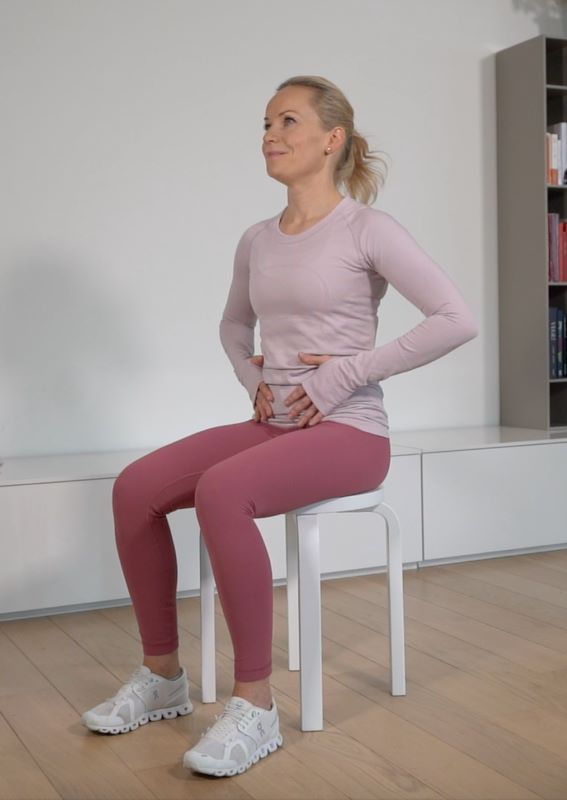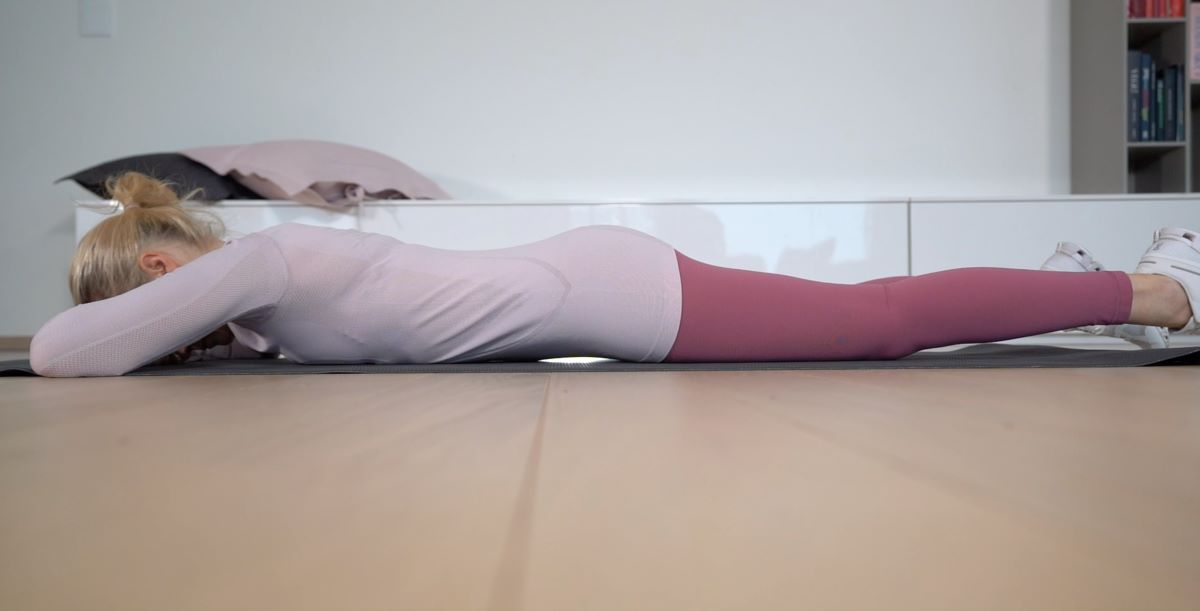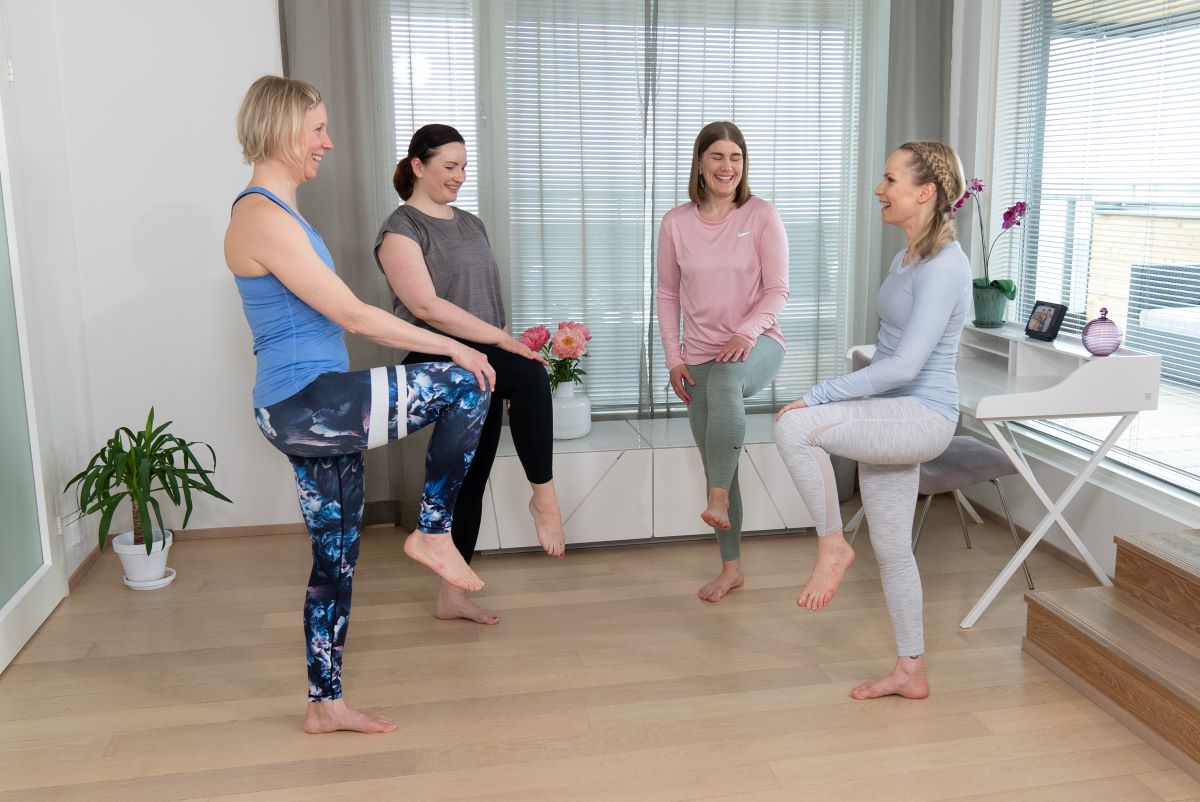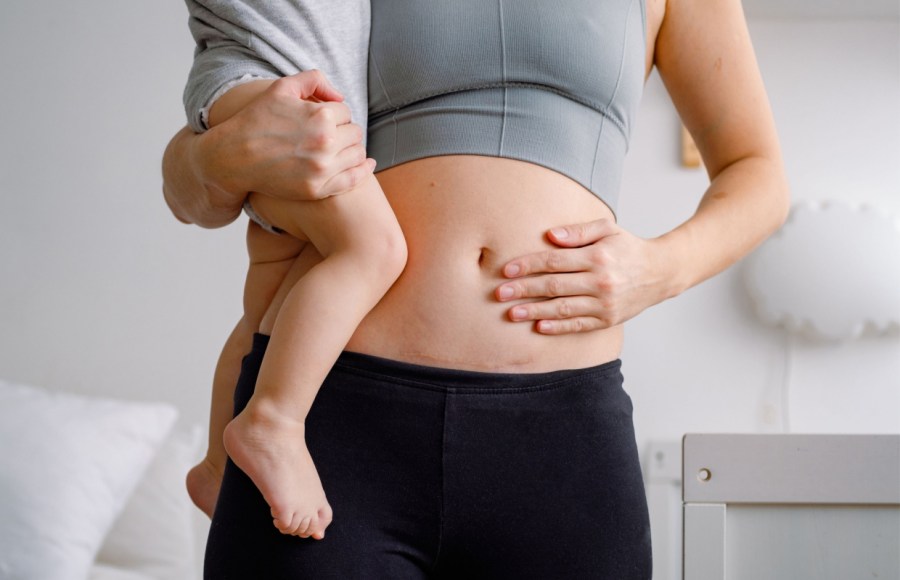If you’ve experienced a pregnancy before – whether it was recently or several years ago – your abdominal muscles may be affected by a condition called Diastasis Recti. But what exactly is it, and how can you find out if you’ve got it? Riina Laaksonen, founder of Nordic Fit Mama, is here to explain how to self-test for Diastasis Recti, before sharing the best exercises to fix and repair the muscles at home…
Related: Fitness during pregnancy: how to exercise safely
What is Diastasis Recti?
Diastasis Recti is a common post-partum condition that affects approximately one-third to two-thirds of new mums.
During pregnancy, deep abdominal muscles, the entire peritoneum, and the white line (linea alba in Latin) stretch as the belly grows. At the same time, direct abdominal muscles are pushed apart to the sides of the belly, and the white line between them widens.
If, after childbirth, the rectus abdominis muscles do not return to their former state, there is “space” between them, the activation of the deep abdominal muscles is weakened, and the muscle tone is low, you might suffer from Diastasis Recti.
This is what happened to me. I had two babies in a row and was eager to return to my rigorous pre-pregnancy workout routine. My body, however, had other thoughts. I had lost my balance and coordination and had to re-learn to do some exercises. I found lunges the most difficult to master. I felt I could not trust my core.
I had no idea I suffered from Diastasis Recti until I searched for information on postpartum rehabilitation. Finally, I learned to heal my body. I discovered what works and what doesn’t. Most importantly, I learned to give my body time to recover.
After getting back on track, I wanted to share my experiences with as many new mums as possible. And to offer mums help and information that I needed so much myself. Research shows that new mothers do not get sufficient mental and physical support after delivery and often feel lost and alone. To change this, I started my company Nordic Fit Mama.
Related: How to exercise safely during winter when pregnant
How to self-test for Diastasis Recti at home
Self-test for Diastasis Recti while lying down:
Lie on your back on the floor. Bend your knees and relax your abdominal muscles. Lift your head and upper back off the floor.
Feel the middle part of the abdomen with your fingers. Try to find edges of rectus abdominis muscles, starting from below the sternum and going down to the pubic bone. Test how deep the fingers sink and how wide this gap is. In normal condition, you can fit one finger between the muscles, at maximum two fingers.
If several fingers sink side by side into the stomach and it feels soft as dough, your abdominal muscles most probably have separated. Also, if you see a baguette-like ridge appearing in the abdomen, it is good to do exercises to strengthen the pelvic floor and transverse abdominal muscles. Exercises are also needed if the tendon seam between the rectus abdominis feels soft.
Self-test for Diastasis Recti while standing up:
The test can also be done while standing. Gently bend your body backwards. If a ridge rises at the midline of the abdomen, it is most probably caused by abdominal separation. If you can make the small ridge disappear by tensing the pelvic floor + deeper abdominal muscles, the control of the muscles is fine and so is the overall situation.
In general, if the tendon seam feels tight, the abdominal area is firm, you can move normally, you don’t have urinary incontinence, and you don’t feel pain in the back area, your core muscles are probably OK.
Remember that returning to overly rigorous training too quickly after pregnancy and childbirth may strain your core and worsen the separation. That’s why you should test the separation yourself before starting exercise. In any case, it is good to begin training the muscles with gentler movements.
Related: Pelvic floor workout – 7 best exercises after pregnancy
Why rehabilitate Diastasis Recti?
The principal task of the abdominal muscles is to maintain the support provided by the core. If your core is weak, the risk of back problems, urinary and bowel incontinence, and uterine or vaginal prolapse increases.
Abdominal muscles also keep internal organs in their correct places. Plus, separated abdominal muscles can make your belly bulge.
Best exercises to repair Diastasis Recti
The deep muscles and the outer abdominal muscles (i.e. “six-pack”) should each be trained differently. The aim is to focus and activate the muscles instead of straining them to extremes. The exercises below are a safe way to start if the postpartum checkup gives you the approval to start working out.
When your muscles have become used to exercising, and you feel they need to get challenged more, you can replace exercise 1 with its variation 2. Start by doing the exercises three times a week. After a month or two, you can increase the number to five times a week if you wish – however, remember to have a few days off every week.

1. Deep abdominal muscles – Activation while sitting down
- Breathe in. Start the activation from the pelvic floor muscles while breathing out and pull the navel slightly. You can also compress the sides somewhat towards the centre line of the belly.
- Hold for 4-6 seconds, breathe in, and relax. Rest for 2-3 seconds and repeat.
- Do two rounds of 8 repetitions.
Exercise 1, variation 2:
- Sit on a chair with the soles of your feet on the floor, start activation from the pelvic floor muscles, and pull the navel in slightly. You can also compress the sides slightly inwards, keeping a neutral spine curve and good posture.
- Breathe in and tighten the contraction of the belly slightly when breathing out and lift one heel off the floor.
- Return the heel to the floor when breathing in and relax the belly muscles slightly.

2. Deep abdominal muscles – Activation while lying on your belly
- Start the activation from the pelvic floor muscles and lift your stomach from the floor.
- Imagine a tunnel between your belly and the floor (it does not matter if you cannot lift your stomach from the floor).
- Keep your back and gluteal muscles relaxed. Concentrate on the movement carefully and hold for 10-15 seconds.
- Rest and repeat three times.

3. Deep abdominal muscles – Balancing on one foot
- Stand up and ensure you have a neutral spine curve and good posture.
- Breathe in. Start the activation from the pelvic floor muscles when you breathe out and pull the navel slightly.
- Lift one foot and hold your balance for a few seconds. Relax as you breathe in, and repeat on the other side. Do the exercise slowly and keep control of your core all the time.
- Repeat five times on both sides.
Can walking help with Diastasis Recti?
Walking is an excellent way to rehabilitate not only the abdominal muscles but also the muscles of the pelvic floor. Walking naturally activates the core muscles, strengthening and relaxing the pelvic floor. Walking also improves general fitness and refreshes the mind. When you walk, keep your back straight and your head up. Try to walk without a stroller as often as possible so you can swing your arms freely and get relaxed movement in your upper body.
Related: Best walking gear for women










